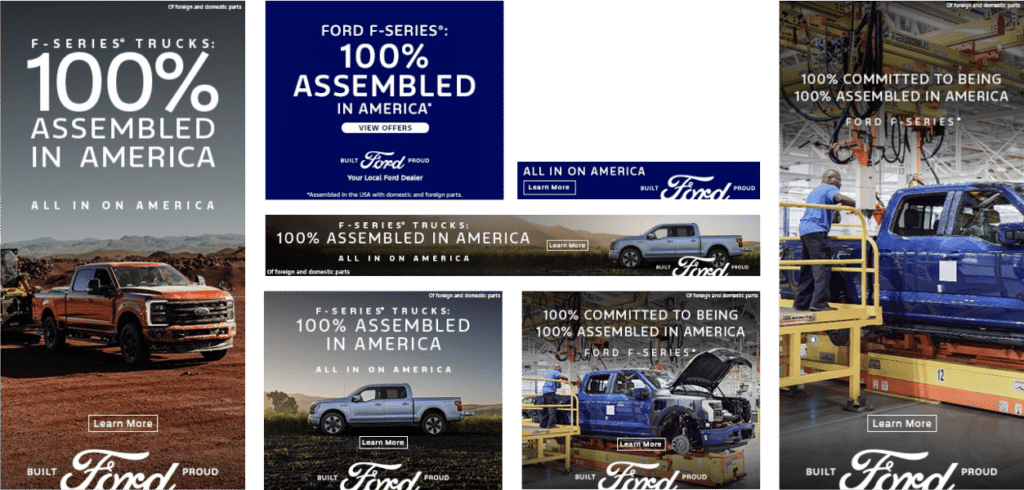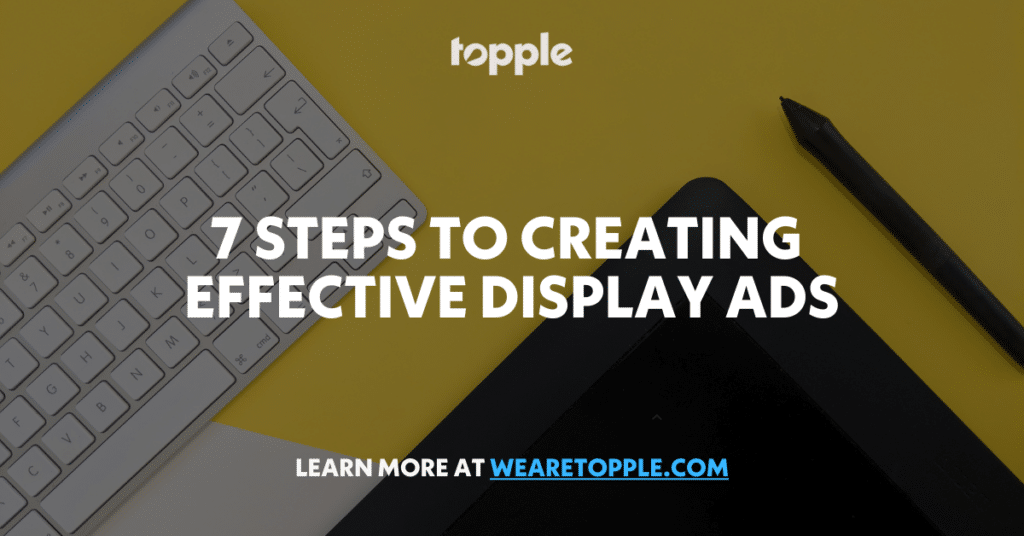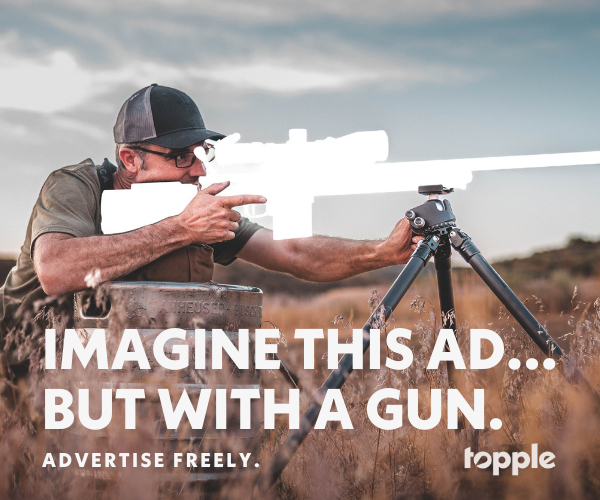Since the early days of digital advertising, display ads have been one of the most efficient ways to build brand awareness and move potential customers down the funnel towards a conversion. It’s not different with Topple, where brands can save up to 60% on CPC’s compared to other digital advertising platforms.
This article is intended to highlight some of the best design practices for brands to consider when building out a set of display ads for Topple.
1. Create a Complete Ad Set
There are dozens of different display ad sizes across the internet but Topple focuses on the 5 most impactful display ad sizes to minimize the demands on your internal creative team while increasing the odds of reaching your marketing KPI’s.
Topple’s top-performing ad sizes are:
Leaderboard: 728×90 (often used as a “sticky” footer ad on desktops, laptops, and tablets)
Large Mobile: 320×100 (often used as a “sticky” footer ad on mobile devices)
Medium Rectangle: 300×250
Billboard: 970×250
Half Page: 300×600
Keep in mind all display ads should be <150kb and in PNG, JPG, or GIF file formats.

2. Use "Scroll-Stopping" Design
In a digital world where people are bombarded with brands competing for their attention, scroll-stopping design can make or break an advertising campaign.
This design theory starts by asking the question: “How can we capture the attention of our target audience?”
Some of our favorite ways to incorporate scroll-stopping design theory include:
1. Embrace negative space. No one made this more famous than David Ogilvy and it worked for good reason. In a busy digital environment sometimes nothing is as eye-catching as negative space. Negative space is space that is intentionally left blank, often white, to draw the viewers eye to the subject matter. A clean product image, bold headline, and succinct call-to-action might just be all you need for a winning design.
2. Use stunning original photography. On the other side of the design theory spectrum is the concept of using beautiful original photography that shows your product in action. Showing your product in-the-field can tap into your audiences desires and inspire them to click through to your landing page.
3. Incorporate user generated content. If you have influencers, or loyal customers with great photography skills, consider incorporating their content into your ads. This might reduce the creative burden on your internal team while having the additional benefit of putting a familiar face using your company’s product in front of your target audience.
3. Communicate Your Value Proposition
Your value proposition should be incorporated into a short yet succinct headline. This is what sets you apart from the competition and what educates and motivates potential customers to click on your ad. In the event they don’t click on the ad, a great headline that clearly communicates your brands value proposition can help customers recall your brand, and what sets your brand apart from the rest, long after they’ve seen your ad (we call this “brand recall”).
4. Have a Clear Call-to-Action
Once you’ve captured your audiences attention with scroll-stopping design theory and a clear value proposition the next step is to tell them what you want them to do next. Should they learn more? Buy now? Schedule a demo? Download an app? Make a reservation?
Whatever the call-to-action might be, communicate it in a way that encourages them to take that next step in the customer journey.
5. Tailor Your Messaging
Display ads are generally used in two kinds of ways, either prospecting or remarketing. With prospecting campaigns you are advertising to people who may not have even heard of your company before and in remarketing campaigns you’re advertising to people who have already been to your website but didn’t complete a purchase.
The messaging to these audiences should be different.
Prospecting campaigns are all about educating the consumer about who you are and what sets you apart from the competition and your design theory should use that as it’s north star.
However with remarketing campaigns it’s all about encouraging people to come back and complete a purchase.
6. Make Sure Your Ad Design and Landing Page are Consistent and Reflect Your Brand Guidelines
All of your ads should reflect your brand guidelines by using the brand colors, fonts, imagery and logo guidelines to ensure continuity of the brand across all marketing touch points.
It’s also important that the value proposition or product advertised in your display ads is consistent with the landing page you send potential customers to. If you’re advertising a particular product it makes sense to send them to that product page rather than your company’s homepage. Sending users to a generic landing page, like your company’s homepage, can increase bounce rates and reduce conversion opportunities.
7. Test and Iterate
With Topple you can add multiple different creative variations to a single campaign and we’ll automatically optimize the campaign spend towards the ones with the highest Click Through Rate (CTR).
This allows you to test different images, value propositions, and call-to-actions until you find the winning combination.
A few more helpful tips for a successful advertising campaign.
Great design is critical to an effective advertising campaign but how will you know if your campaign has been effective if you aren’t measuring success?
Here are a couple recommendations for campaign measurement:
1. Incorporate UTM Tracking. If you use Google Analytics to measure the source of your website traffic and conversions then we recommend using Google’s Campaign URL Builder to incorporate UTM parameters related to the campaign. For “source” enter something like “Topple” so you know that website traffic came from your digital advertising campaign with Topple.
2. Install Site Wide Retargeting Pixel. Visit your pixel page to create a retargeting pixel and implement it on every page of your website except the order confirmation page. This will allow you to build an audience of high-intent site visitors who you can advertise to later.
Watch: How to Create a Retargeting Pixel
3. Install Abandoned Cart Pixel. This is a specific retargeting pixel you can place on your sites “Add to Cart” buttons that will allow us to track users who have added products to their cart. By targeting these users, and negatively targeting those who completed a purchase, you can target users who abandoned their carts and encourage them to come back to complete their purchase.
4. Install Conversion Pixel. Topple offers three different versions of conversion pixels depending on the level of complexity and detail you’d like. Our “no-value” conversion pixel tracks whether or not there’s been a conversion and is great for app-download or subscription campaigns. The “fixed-value” conversion pixel allows you to append an Average Order Value (AOV) to a campaign and our “dynamic-value”, while more complex to implement, records actual order values pulled from your cart so you can accurately track Revenue, Profit, and ROI within your Topple dashboard.










